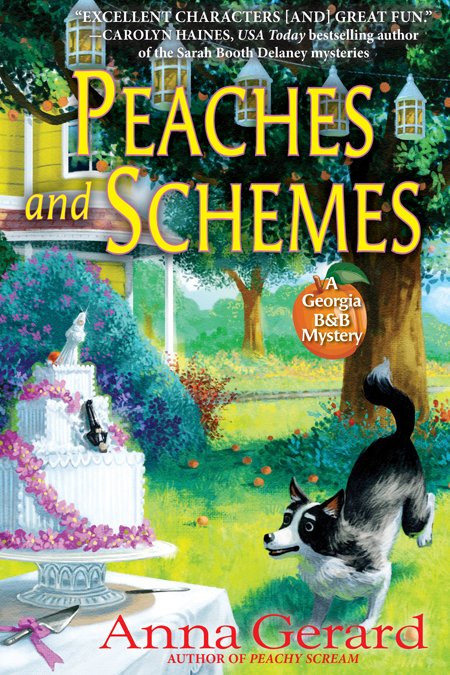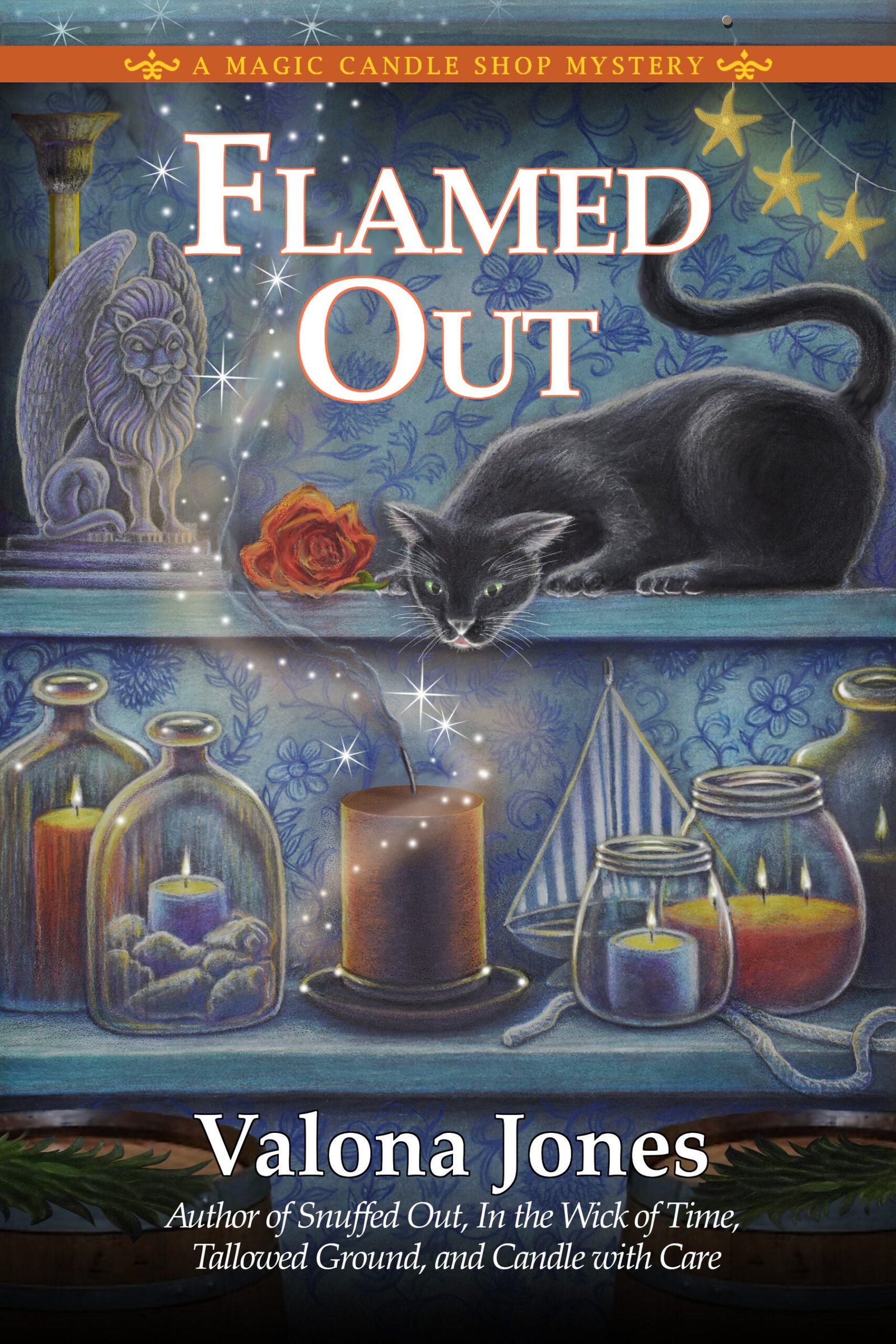Let's Talk with Lois Winston
When the Crime Really Happened
Most of my books have been inspired by actual events I’ve read about, either crimes or human-interest stories. They become the seeds that germinate in my creative juices, eventually sprouting plots. Forget the disclaimer at the beginning of each Law & Order episode. Anyone who’s a news junkie can tell you which real-life event inspired each episode. However, unless I mention it during a talk, an interview, or a blog post, no one would be able to pinpoint what originally inspired each of my plots.
Until now.
 For Guilty as Framed, the eleventh book in my Anastasia Pollack Crafting Mystery Series, I’ve set the plot around a yet unsolved crime that took place in 1990. For years I’ve been fascinated with the burglary of the Isabella Stewart Gardner Museum in Boston. It’s still considered the largest art heist in history, and to this day, not only haven’t the perpetrators been caught, but none of the artworks have ever been recovered. Worst of all, many of the suspects have since died.
For Guilty as Framed, the eleventh book in my Anastasia Pollack Crafting Mystery Series, I’ve set the plot around a yet unsolved crime that took place in 1990. For years I’ve been fascinated with the burglary of the Isabella Stewart Gardner Museum in Boston. It’s still considered the largest art heist in history, and to this day, not only haven’t the perpetrators been caught, but none of the artworks have ever been recovered. Worst of all, many of the suspects have since died.
I’ve read countless articles and watched several documentaries about the theft and subsequent investigation to find the thieves and missing artworks. With each, my fascination has grown, as has the itch to incorporate this crime into one of my mysteries. I may not be able to solve the mystery of the missing paintings, but I became obsessed with solving the puzzle of how I could tie a factual thirty-two-year-old crime in Boston into the plot of a contemporary cozy mystery series that takes place in New Jersey.
My eureka moment was anything but a eureka moment. I just started writing, and as I wrote and continued to research the theft, min-eureka moments began to pop into my brain. In the end, I came up with a story that uses various events from the actual crime, making them plausible within the pages of my story by taking some authorial liberties. After all, I’m writing fiction, not true crime, which also enabled me to invent several characters for the purpose of advancing my plot.
In addition, I’ve changed the names of suspects and their relatives, whether they’re still alive or not, to protect the innocent, the not-so-innocent, and yours truly. Like my amateur sleuth, I may be a Jersey girl, but I’ll leave tangling with the mob to Anastasia. I only want to deal with fictitious mobsters.
What about you? Do you enjoy mysteries that incorporate real-life events? I’d love to read your comments about this!
Guilty as Framed
An Anastasia Pollack Crafting Mystery, Book 11
When an elderly man shows up at the home of reluctant amateur sleuth Anastasia Pollack, she’s drawn into the unsolved mystery of the greatest art heist in history.
Boston mob boss Cormac Murphy has recently been released from prison. He doesn’t believe Anastasia’s assertion that the man he’s looking for doesn’t live at her address and attempts to muscle his way into her home. His efforts are thwarted by Anastasia’s fiancé Zack Barnes.
A week later, a stolen SUV containing a dead body appears in Anastasia’s driveway. Anastasia believes Murphy is sending her a message. It’s only the first in a series of alarming incidents, including a mugging, a break-in, another murder, and the discovery of a cache of jewelry and an etching from the largest museum burglary in history.
But will Anastasia solve the mystery behind these shocking events before she falls victim to a couple of desperate thugs who will stop at nothing to get what they want?
Guilty as Framed is currently available for pre-order. Find links here.
Posted in Let's Talk, with Lois Winston • Tags: Anastasia Pollack Crafting Mysteries, Guilty as Framed, Let's Talk, Lois Winston, Preorder, When the Crime Really Happened | 19 Comments







Like you, I may get inspired by a contemporary news item and include it in my fictional work. Or use it as the springboard for character development. I don’t focus on the crime as much as the motives for a suspect. But anytime we have a model for our stories, it’s helpful.
This was a first for me and quite a challenge, Nancy, but it was quite satisfying when it all came together.
Lois, I try to incorporate legends and myths from the eastern Kentucky area where my series is set. I think having true facts in the story helps readers suspend belief to enjoy the mystery.
I completely agree, Cheryl.
I agree with Cheryl about incorporating local lore and facts with a contemporary mystery. I especially loved doing that with the McKenna mysteries. For the last one, I went back 125 years to the theft of Hawaii’s Crown Jewels. Prior to that story, I’ve tackled everything from the Hawaiian crime syndicates in the 70s to Japanese immigration issues in the early 20th century to ancient myths. As a reader, those are the types of stories I like to read most. Something that entertains and educates simultaneously.
And you’ve been very successful doing so, Terry!
I think a lot of writers get the gems for their stories from real life cases/occurrences. The trick is to make them our own, but with the flavor or if there is pertinent history, of that of the past.
Great point, Debra!
Lois, I remain open to all possibilities! The reason I got into writing was to craft some different outcomes for real life things that went astray. For instance, one of my first romances was about a gal who was on a vendetta to save a historic building and turn it into a museum in my hometown. For decades the old tabby warehouse had been crumbling to the ground. The owner couldn’t afford/didn’t want to spend the money to save it. So I fixed it in my book. Now some twenty something years later, the building has a new owner, it’s been stabilized, and now it’s on the way to becoming a museum. I can’t take full credit for the idea as many of us locally had the same dream. Regardless, we won’t lose this local treasure now, and I can’t wait to tour through the facility when it opens. In general, it seems to happen that an idea sticks in my head and won’t let go. I give it words and off we go.
Maggie, that’s how I began writing, also. An idea popped into my head and wouldn’t leave me alone until I committed it to paper. Ten years and many revisions later, that first attempt became the second book I sold, my romantic suspense Love, Lies and a Double Shot of Deception.
Hi Lois, Congratulations on your Anastasia mystery. I included actual places and events from the 1950s, which is when my Sydney Lockhart series is set. They all take place in historic hotels that are still in operation today, so the research is fun, especially when I stay at the hotels. I always manage to find tidbits to weave into the plot.
Kathleen, I’ve read and enjoyed several of the books in your series. I love the way you chose such a unique theme for your mysteries.
Nowadays I read cozy mysteries because the news is enough real-life crime exposure for me but years ago I read my first police procedural. It was about the first person convicted based on DNA evidence and it was a great read! Colin Pitchfork is a British double child-murderer and rapist. He was the first person convicted of rape and murder using DNA profiling after he murdered two girls in neighbouring Leicestershire villages, the first in Narborough, in November 1983.
Second time trying to post a reply. That sounds like a fascinating book, Linda, but like you, I’m getting overwhelmed by too much real-life crime to read anything gritty these days.
I like the idea of pulling murders from the headlines and using them in books, but in practicality it’s never worked for me. Except the other day I heard a story about some guy’s dog bringing home a human hand, and the police being hot on the trail looking for the rest of the corpse. That one, I think I can fit into a book. 🙂
I’ve hear news reports of things like that from time to time, Cheryl. They always freak me out, but I can see where you could work that into a cozy mystery.
Yikes! Need that second cup of coffee. i meant Diane, not Cheryl!
I really like stories based on real events and cold cases. I enjoy history anyways, so I learn a little about something I may not have otherwise heard of. Sometimes it gets me interested to read more about the actual event.
Same with me, Alicia. That’s how I wound up writing about the art heist at the Isabella Stewart Gardner Museum.